Walking your dog can be one of the most rewarding parts of pet ownership, but it also requires a level of awareness and responsibility that sometimes gets overlooked. It’s not just about exercise; it’s about creating a safe, engaging, and educational experience for your furry friend. From choosing the right leash to understanding canine body language, being a conscious dog walker can enhance your relationship with your pet while ensuring their well-being. Here are 15 smart hacks designed to elevate your dog-walking game and make you a more mindful pet parent.
1. Choose the Right Leash
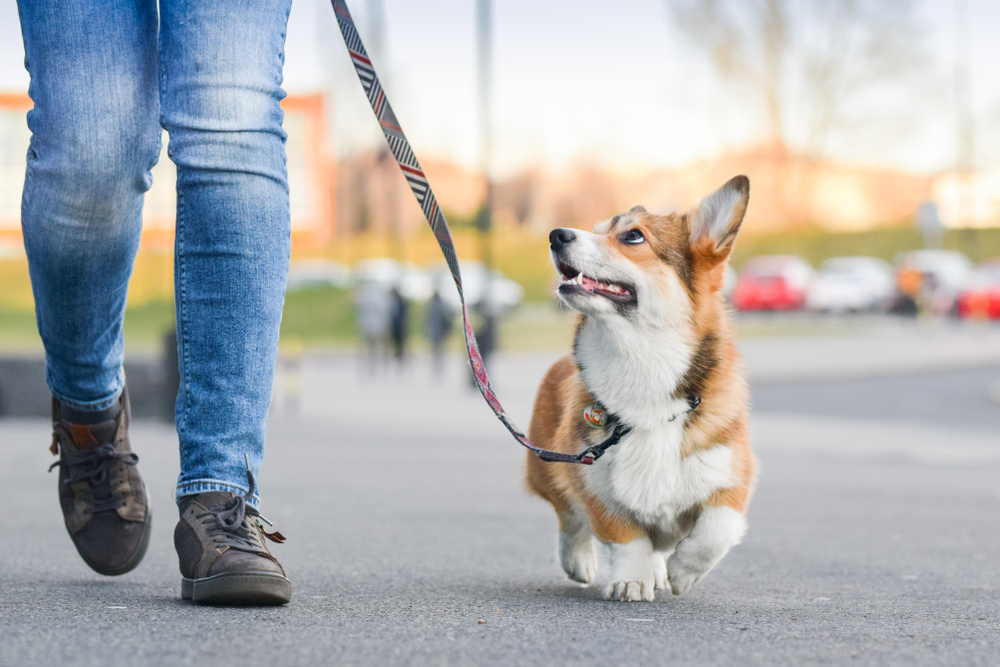
Picking the right leash is more than just a stylistic choice; it’s a matter of safety and control. A sturdy, well-fitted leash provides you with better control over your dog, especially in high-traffic areas or situations with unpredictable stimuli. Retractable leashes might seem convenient, but they can lead to dangerous situations if your dog suddenly darts into traffic or towards another dog. Experts from the American Kennel Club recommend a standard 4-6 foot leash for most dogs, as it provides the perfect balance of control and freedom.
It’s also important to consider the material of the leash. Nylon leashes are durable and easy to clean, while leather leashes offer a comfortable grip. Avoid chains, as they can be heavy and may injure both you and your dog if used improperly. Remember, the right leash can prevent accidents and make your walks more enjoyable for both you and your pet.
2. Master Basic Commands

Teaching your dog basic commands like “sit,” “stay,” and “heel” is crucial for a successful walk. These commands are not just for showing off your dog’s skills but are essential tools for managing their behavior during walks. Practice these commands in a controlled environment before trying them out during a walk. Your dog’s ability to follow commands can prevent confrontations with other dogs or people and keep them safe from potential hazards.
Consistency and patience are key when training your dog to respond to commands. Use positive reinforcement techniques such as treats and praise to encourage good behavior. Keep training sessions short and fun to maintain your dog’s interest and prevent frustration. Over time, these commands will become second nature to your dog, making walks smoother and more enjoyable for both of you.
3. Be Attentive to Your Dog’s Body Language

Understanding your dog’s body language can significantly improve your walks by allowing you to anticipate their needs and reactions. Signs of stress or anxiety, such as excessive panting, cowering, or a tucked tail, indicate that your dog might be overwhelmed by the current environment. According to a study published in Canine Science Forum, dogs communicate a lot through their body language, and being attuned to these signals can help you adjust your approach accordingly.
Pay attention to positive signals as well, like a wagging tail and relaxed posture, which suggest that your dog is comfortable and happy. If your dog seems anxious, consider changing your walking route or avoiding certain triggers like loud noises or crowded areas. Being in tune with your dog’s emotions can foster a stronger bond and make your walks a mutual pleasure.
4. Prep for Poop Emergencies

Nobody likes to talk about it, but poop is a part of the dog-walking experience. Always carry more waste bags than you think you’ll need; it’s better to have extra than to find yourself in an awkward situation. Many parks and trails offer bags at the entrance, but it’s best not to rely on them being stocked. This ensures you’re prepared for any unforeseen “business” your dog might have.
Beyond just having waste bags, consider carrying a small shovel or scoop in heavily soiled areas. It’s an extra step, but doing so shows consideration for other park-goers. Also, be sure to dispose of waste bags in designated trash bins, not just along the trail. Keeping areas clean is part of being a responsible pet owner and helps maintain a positive image of dog owners in the community.
5. Keep Your Dog Hydrated

Just like humans, dogs need to stay hydrated, especially during long walks or hot weather. Dehydration in dogs can lead to serious health issues, so it’s important to bring water with you on your walks. A study by the Journal of Animal Physiology highlights the importance of regular hydration to maintain a dog’s health and stamina. Consider investing in a portable dog water bottle or collapsible bowl for convenience.
Pay attention to your dog’s cues; if they’re panting heavily or seem lethargic, it’s time for a water break. Some dogs are more prone to dehydration than others, especially breeds with short snouts or those with thick fur. It’s better to take short, frequent breaks for water than to wait until your dog is extremely thirsty. Keeping your dog well-hydrated ensures they stay healthy and happy during and after your walk.
6. Choose the Right Walking Time

Timing your walks can make a significant difference in their quality. Early mornings or late afternoons are typically the best times, especially in warmer climates, to avoid the excessive heat of midday. Asphalt temperatures can become particularly dangerous for dog paws, leading to burns or discomfort. Always check the pavement temperature with your hand — if it’s too hot for you, it’s too hot for your dog.
Beyond temperature, consider the level of activity in your chosen walking location. Some dogs thrive in busy parks, while others prefer quieter settings. The right time can also depend on your dog’s energy levels; some are early risers, ready to tackle a walk at dawn, while others might need a bit more time to wake up. Adjust your schedule to match your dog’s needs and preferences for an optimal walking experience.
7. Vary Your Walking Routes
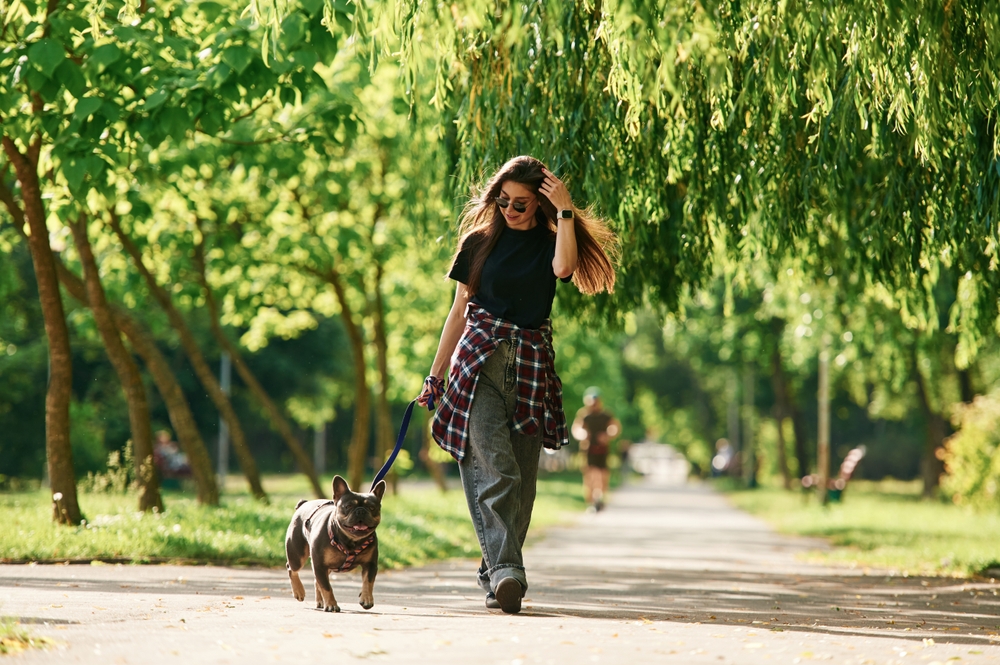
Exploring new routes can be enriching for your dog, providing them with different scents and stimuli that keep their minds active. This mental stimulation is crucial for their development and can help reduce behavioral issues caused by boredom. A study from the Applied Animal Behaviour Science journal suggests that varying environments can increase a dog’s mental and emotional health. Try to change your route at least once a week to keep things interesting.
Introducing your dog to different terrains not only enhances their experience but also helps them build confidence in new settings. Whether it’s a new park, a different neighborhood, or a nature trail, these changes can offer unique challenges and opportunities for learning. Just ensure any new location is safe and allows dogs. This approach keeps your walks exciting and benefits your dog’s overall well-being.
8. Practice Mindful Walking
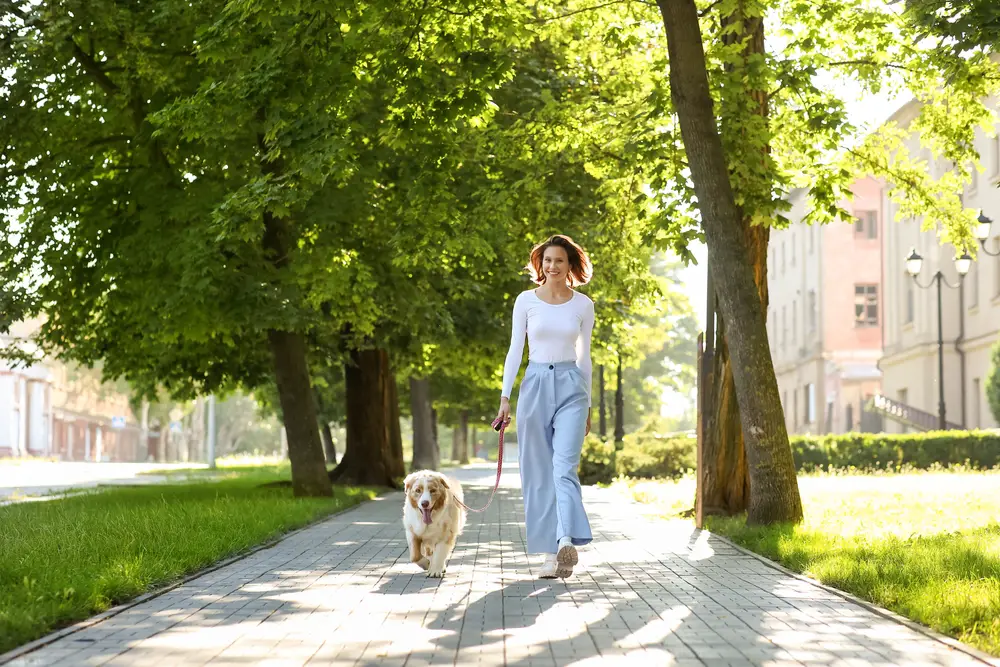
Engage in the walk as an opportunity to focus on the present moment and connect with your dog. It’s easy to get caught up in checking your phone or zoning out, but being present can enhance the experience for both of you. Notice your dog’s reactions to the environment, and take in the sights and sounds around you. This mindfulness can transform the walk from a routine task into a shared moment of joy.
When you’re attentive, you’re also more likely to notice subtle changes in your dog’s behavior or health. Regular walks offer a chance to monitor their gait, energy levels, and mood. These observations can be crucial for early detection of potential health issues. Mindful walking strengthens your bond with your dog and promotes a healthier, more attuned relationship.
9. Use Positive Reinforcement

Rewarding your dog for good behavior during walks can reinforce desirable actions and make the experience enjoyable for both of you. Carry small treats and offer them when your dog follows commands or demonstrates good manners, like walking calmly beside you. This reinforces positive behavior and encourages your dog to repeat it in the future. Over time, you might not need treats as often, but the foundation of good behavior will be set.
Positive reinforcement also involves praise and affection, which can be just as rewarding for your dog as treats. Dogs thrive on your approval, and a well-timed “good dog” can go a long way. Be sure to reward specific behaviors promptly so your dog associates the action with the reward. This method creates a happy, well-behaved walking companion who looks forward to exploring the world with you.
10. Respect Other Dogs and Owners
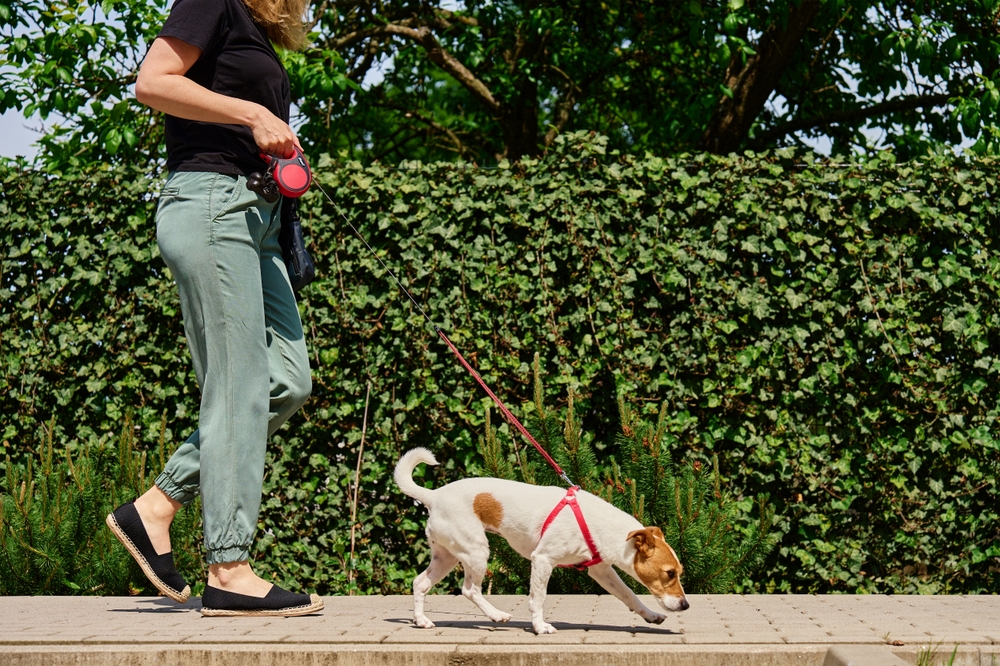
A successful walk involves being considerate of others you encounter along the way. Not every dog is friendly or wants to interact with yours, so it’s important to maintain control and respect boundaries. Always ask before allowing your dog to approach another dog, and be prepared to redirect them if necessary. This respect for space ensures everyone feels comfortable and safe.
Teaching your dog to focus on you instead of potential distractions can help manage these situations. Use commands like “leave it” or “look at me” to redirect their attention when necessary. Practicing these commands in a controlled environment before taking them on the road is crucial for success. Your respect for others’ space and needs reflects well on you as a responsible pet owner.
11. Be Prepared for Weather Changes
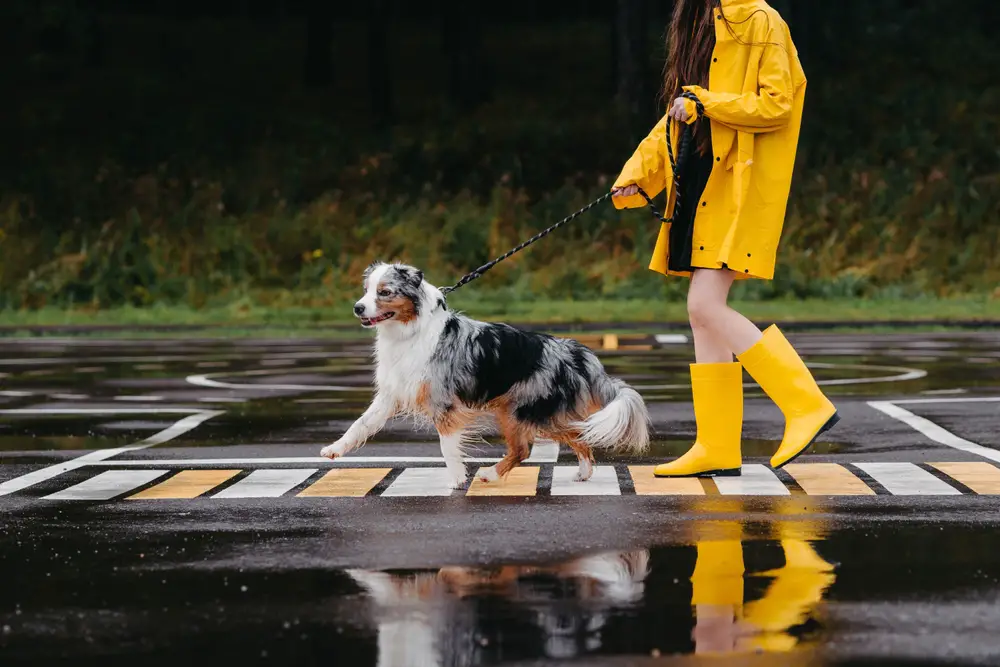
Weather can be unpredictable, and being prepared can make all the difference during your walks. Carry a small umbrella or raincoat for both you and your dog if rain is a possibility. In colder months, consider a dog coat or sweater for breeds with shorter hair or older dogs more sensitive to the cold. Your comfort and preparedness ensure that weather doesn’t cut your walk short.
On hot days, protect your dog’s paws from hot pavement and provide shade breaks whenever possible. Hydration is also crucial in warmer weather to prevent heat exhaustion. Adjust the length and intensity of your walk based on the weather conditions to ensure your dog’s safety. Being adaptable to changing weather shows your commitment to your dog’s well-being.
12. Incorporate Training into Your Walks

Walks are an excellent opportunity to reinforce training in a real-world setting. Incorporate commands like “sit” at stoplights or “stay” when greeting another dog. This practice helps solidify your dog’s understanding of commands in different environments, making them more obedient and well-mannered. Training during walks also makes them more engaging and mentally stimulating for your dog.
Use positive reinforcement to reward successful training moments, and keep sessions short and fun. The changing environment of a walk provides unique challenges and learning opportunities that can’t be replicated at home. This approach not only improves their behavior but also enhances the bond between you and your dog. Over time, these little moments of training on walks can lead to a well-behaved, happy dog.
13. Know Your Dog’s Limits

Every dog has different needs and capabilities, so it’s essential to tailor the length and pace of your walks to suit your pet. Pay attention to signs of fatigue, like slowing down or lagging behind, and adjust your walk accordingly. Overexertion can lead to injuries or heat exhaustion, so be mindful of your dog’s comfort level. This awareness ensures that your walks are beneficial rather than detrimental.
Consult with your veterinarian to understand the ideal amount of exercise for your dog’s breed, age, and health condition. Puppies and older dogs often require shorter, more frequent walks. Breeds with high energy levels may need longer or more intense sessions. Understanding and respecting these limits will keep your dog healthy and happy.
14. Invest in Reflective Gear
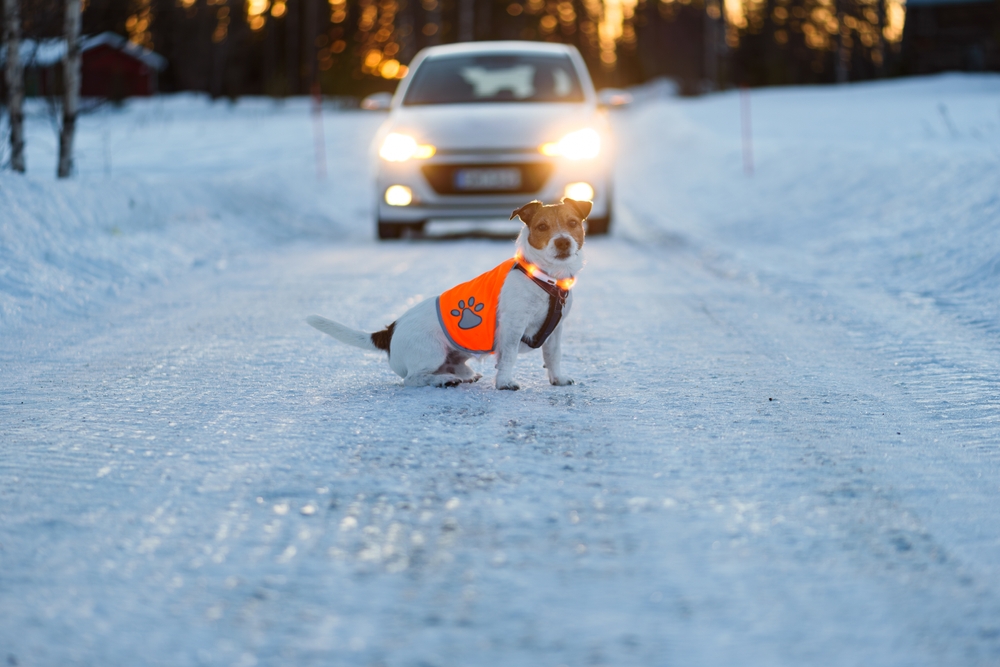
Safety should always be a priority, especially if you’re walking in low-light conditions or near traffic. Reflective gear for both you and your dog can enhance visibility and prevent accidents. Consider a reflective leash, harness, or vest for your dog, and wear bright or reflective clothing yourself. These precautions ensure that drivers and other pedestrians can see you clearly.
In addition to reflective gear, consider attaching an LED light to your dog’s collar for added visibility. These small steps can make a big difference in ensuring your safety during nighttime or early morning walks. Visibility reduces the risk of accidents, making your walks a safe and enjoyable experience. By prioritizing visibility, you demonstrate responsibility and care for your dog’s safety.
15. Enjoy the Experience
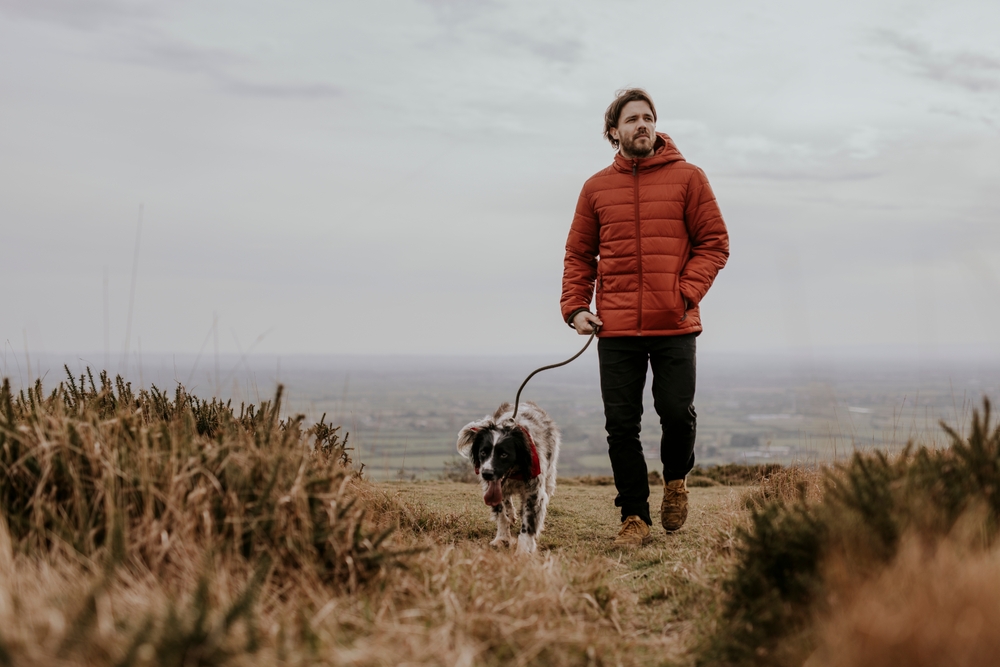
Finally, remember that walks are not just for physical exercise but also for shared enjoyment and bonding. Take the time to appreciate the companionship and the simple pleasure of spending time outdoors with your dog. Relish the small moments, whether it’s watching your dog discover a new scent or enjoying the tranquility of a quiet morning walk. These experiences enrich your relationship and create lasting memories.
Approach each walk with a sense of gratitude and openness. Allow yourself to disconnect from daily stressors and be present in the moment with your dog. This mindset transforms routine walks into cherished rituals that enhance your life and your dog’s. At the end of the day, the joy and connection you share during these walks are what truly matters.
